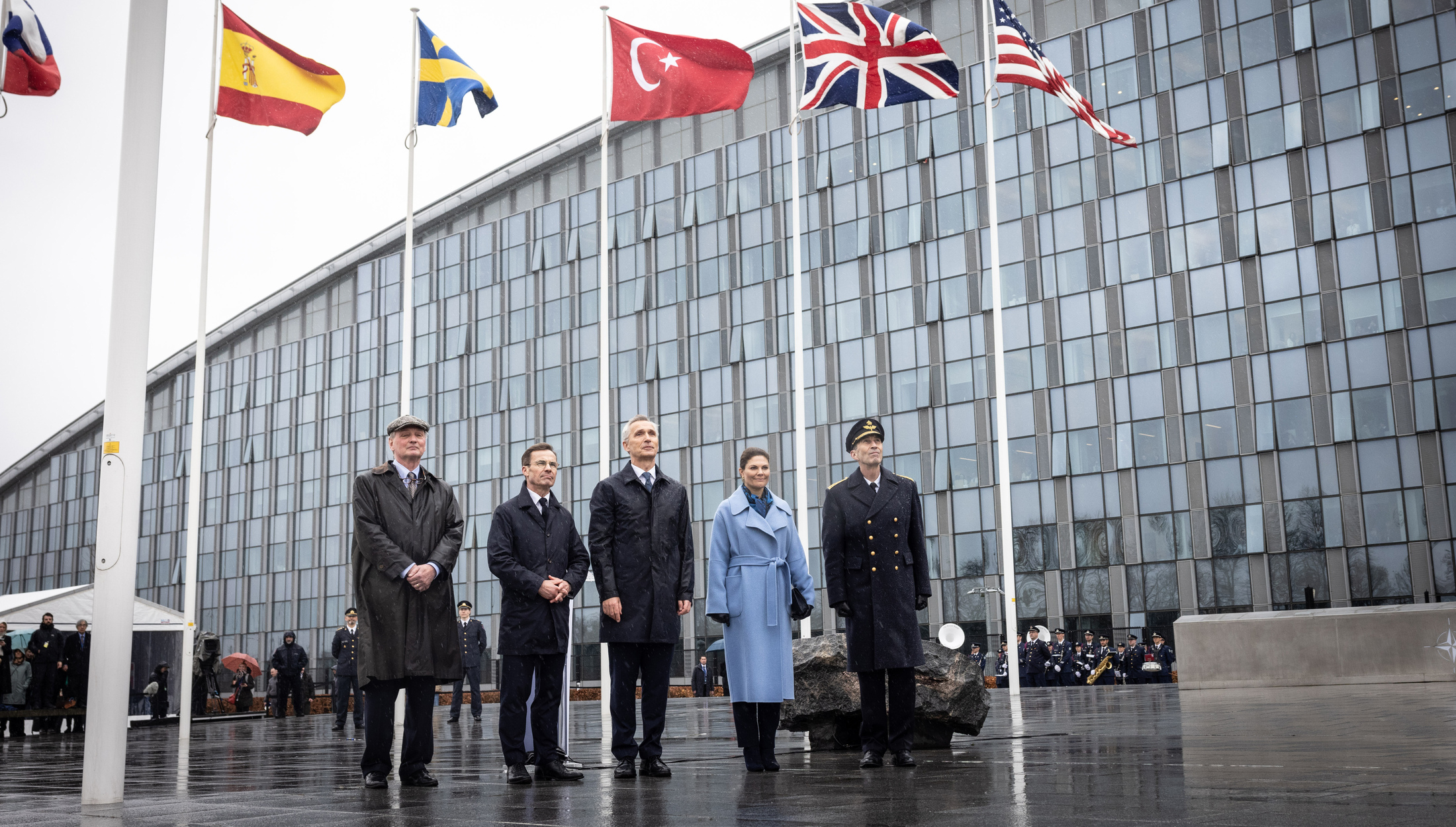
Editor’s note: This op-ed was written by Dr. Matthew Rhodes is a professor at Ted Stevens Center for Arctic Security Studies, a U.S. Department of Defense Regional Center based in Alaska. The views expressed in this article only reflect his own views, not those of TSC or the U.S. Department of Defense.
The ceremonial raising of Sweden’s flag at NATO Headquarters March 11 marked the culmination of a dramatic two-year process. Sweden’s and Finland’s accessions bring all Arctic states minus Russia into the Alliance and boost deterrence and defense across NATO’s Northern Flank. Their entries are rightful cause for celebration, but fully achieving “day after” benefits also means addressing potential challenges.
It is first worth recalling the swiftness of these countries’ shift toward membership. Sweden had been officially neutral or militarily non-aligned since the early nineteenth century, as had Finland since the late 1940s. Both had still become active NATO partners, but Russia’s all-out invasion of Ukraine in February 2022 crystalized the benefit of full collective defense. Public opinion swung from as little as one-quarter to as much as four-fifths in favor of accession, and the two governments submitted applications in May the same year. Finland completed accession in April 2023, but reservations from Turkey and Hungary pushed Sweden’s finalization to this month.
As others have pointed out, these new Allies will be immediate providers as well as consumers of security. Simply by geography, they consolidate NATO presence across the Baltic and High North. Their militaries possess advanced fighter jets and submarines as well as substantial numbers of active-duty and reserve troops with cold-weather training and equipment. Experience with “total defense” resilience, support for effective NATO-EU cooperation, and ability to bridge East-West gaps in security perspective within the Alliance present additional intangible contributions.
The paired enlargement brings strong value both to the countries themselves and the Alliance as a whole, but risks should also be recognized. President Vladimir Putin dismissed the accessions as “meaningless” in the days following Sweden’s entry, but elsewhere he and other Russian officials have threatened “military-technical” counter-measures. The bulk of Russian ground forces remain committed to the war against Ukraine, but air and naval assets in the Kola peninsula and Barents Sea regions east of Scandinavia remain largely in place. Despite Russia’s heavy losses of men and materiel, NATO experts assess it could “reconstitute” its military within three to five years.
Nuclear saber-rattling remains another Russian tactic. As part of failed efforts to dissuade accession, in spring 2023 Russia’s ambassador in Stockholm warned that NATO membership would make Sweden a “legitimate target.” Later that summer, prominent scholar Sergei Karaganov, honorary chair of Russia’s Council on Foreign and Defense Policy, published a widely-discussed article suggesting preemptive nuclear strikes against countries in Europe to “restore” deterrence and block further aid to Ukraine.
Additional hybrid threats have appeared in the meantime. Finland has blamed Russia for damage to its undersea Balticconnector natural gas pipeline with Estonia in October 2023 as well as for orchestrated waves of would-be migrants from the Middle East across the Russian-Finnish border. Russia-based hackers also seem behind disruptive ransomware attacks against public and private targets in Sweden since January.
Such challenges, which are not limited to Russia, are cause for neither panic nor complacence. Versions of many predate 2022, and a chief benefit of joining NATO is greater overall security against them. As part of the ongoing adaptation that has furthered the Alliance’s longevity, NATO leaders recently looked deeply at such issues through the NATO 2030 reflection process and new Strategic Concept. Along with continued unity, effective implementation and resourcing of resulting plans will be most important going forward.
The large-scale Nordic Response NATO exercise in Norway, Sweden, and Finland that coincided with Sweden’s NATO entry the first half of March presented a good example. It tested Alliance defensive action above the Arctic Circle across those countries’ northern reaches. NATO’s seventy-fifth anniversary in April and Washington summit in July offer similarly suitable opportunities for decisions on issues from the next NATO Secretary General to details of regional defense plans and further support to Ukraine that can help cement accession success.
Photo by NATO | Raising of the NATO flag of Sweden during the Accession Ceremony. Left to right Axel Wernhoff (NATO Permanent Representative, Sweden); Ulf Kristersson (Prime Minister of Sweden); NATO Secretary General Jens Stoltenberg; Victoria, Crown Princess of Sweden; General Micael Bydén (Chief of Defence, Sweden). View Image Page
